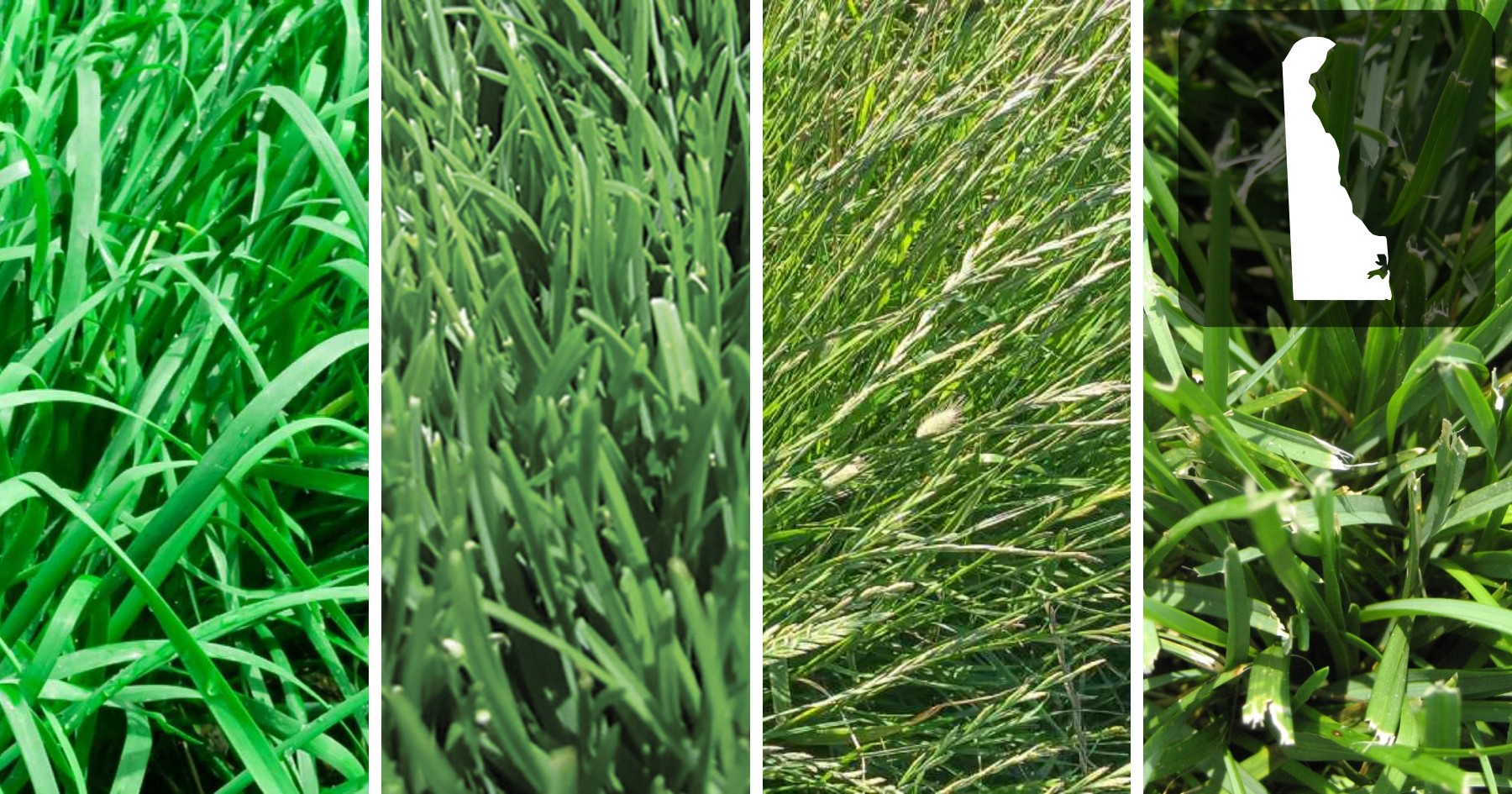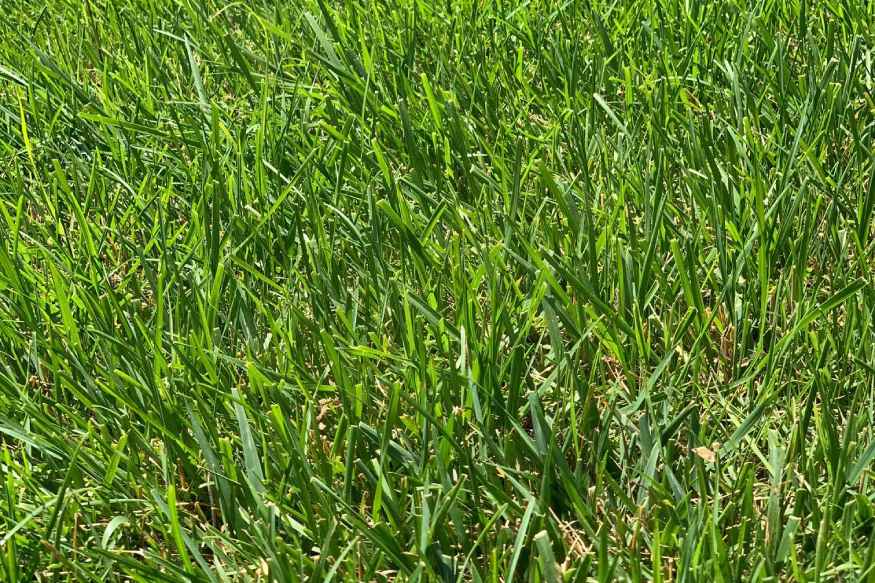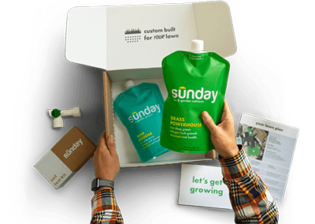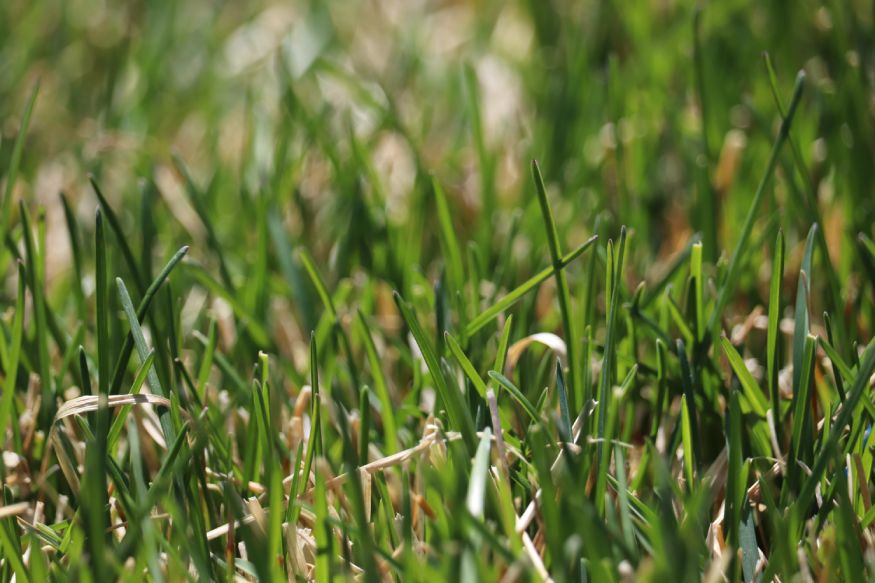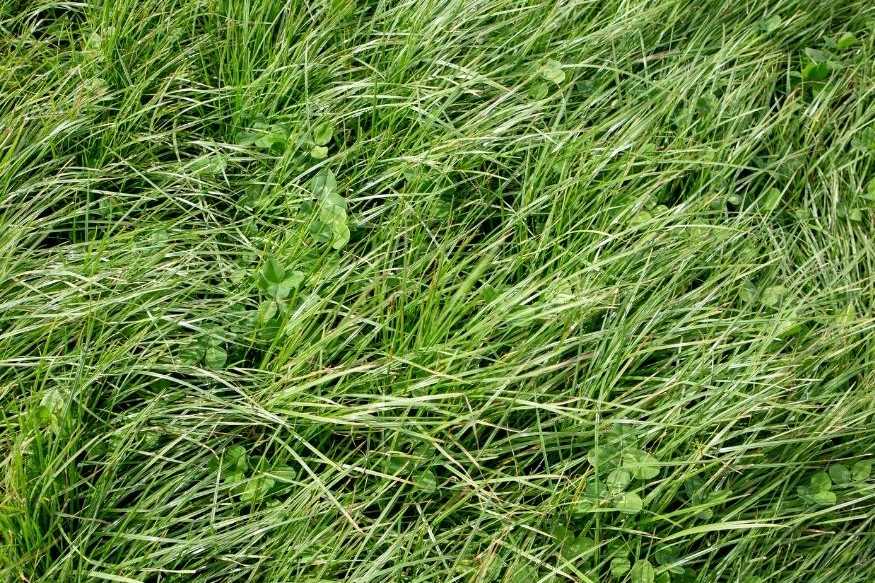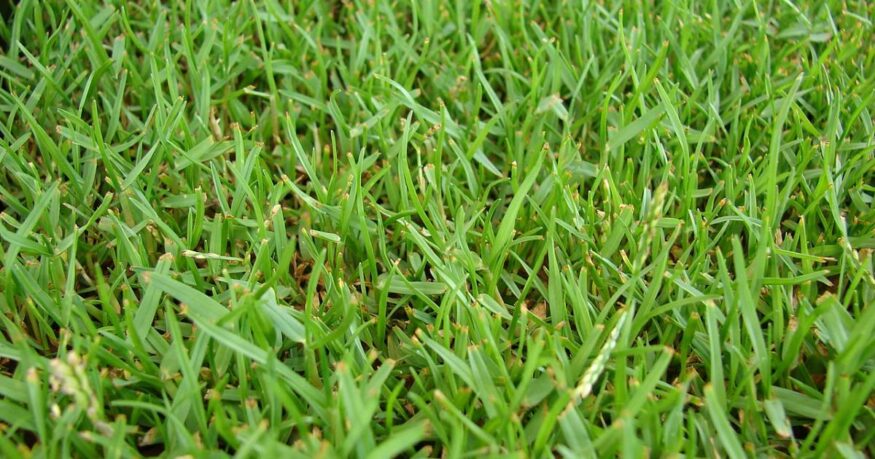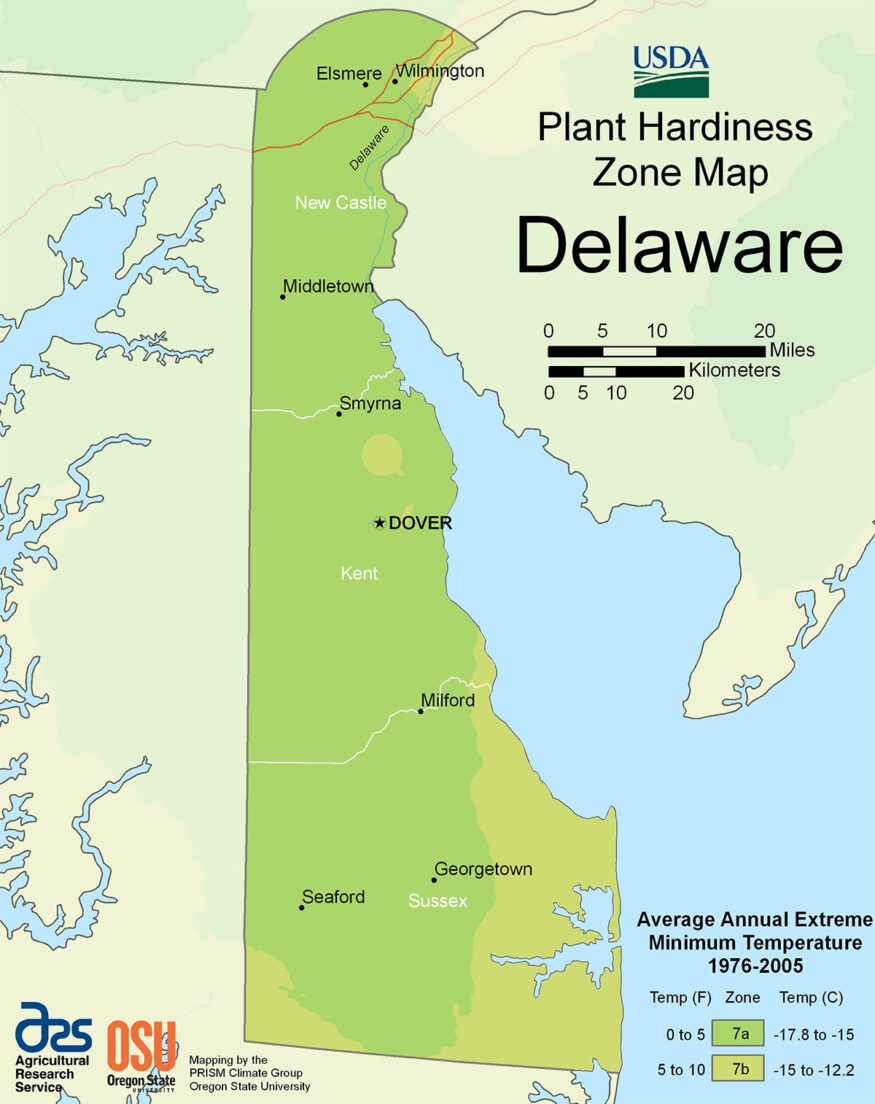Growing that picture-perfect lawn in Delaware often feels like an odyssey to many homeowners. You’re wrestling with sweltering, humid summers on one hand and bracing for frosty, snowy winters on the other — finding the right grass for such extremes can seem as elusive as the Holy Grail.
But hold fast, fellow lawn enthusiasts, because I’ve got an ace up my sleeve: Tall Fescue. This hardy contender could be just what your lawn needs. But if your thirst for knowledge extends beyond quick fixes, don’t go anywhere.
We’re about to embark on a deep dive into Delaware’s lawn care secrets, exploring a multitude of grass varieties and the most effective strategies to cultivate a lawn that’s not just healthy, but also a sight to behold in the First State. Stay with us.
[ez-toc]
Tall fescue
| Also Known As | Lolium arundinaceum (formerly Festuca arundinacea) |
| Type of Grass | Cool season perennial |
| Optimal Zones | Northern through transition zones |
| Root Structure | Deep |
| Winter hardiness | Excellent |
| Shade tolerance | High |
| Water Requirements | Medium to High |
| Drought Tolerance | Excellent |
| Self Repair Capacity | Limited |
| Overall Maintenance Requirements | Low |
Why Tall fescue is The Most Popular Choice For Delaware
If you’re looking for a grass that can withstand Delaware’s cold winters and hot summers, tall fescue might be the perfect choice for you. This cool-season grass is not only tough but also resistant to drought, heat, salt, and diseases, making it an excellent option for homeowners who want a low-maintenance lawn.
Tall fescue has a coarse to medium texture and a dark green color that creates a dense and attractive lawn. It can even be mixed with other grasses, such as Kentucky bluegrass or perennial ryegrass, for improved performance. It requires full sun to partial shade exposure, so make sure to plant it in an area that gets plenty of sunlight. However, it doesn’t do well in deep shade or wet areas, so keep that in mind when choosing where to plant it.
To keep your tall fescue lawn looking its best, make sure to mow it regularly and keep it at a height of 2 to 3 inches. It also needs moderate watering during the growing season, especially in the first year of establishment. Make sure to water it deeply and infrequently to encourage deep root growth. Tall fescue needs low to moderate fertilization, depending on the soil quality and the desired lawn quality. Fertilize it with a balanced fertilizer once or twice a year, preferably in the fall. It should also be aerated and overseeded annually to prevent soil compaction and thinning of the turf.
One of the best things about tall fescue is that it stays green throughout the year, unless exposed to extreme drought or cold stress. You can even overseed it with a cool-season grass such as perennial ryegrass or fine fescue to improve its appearance and density.
Tall fescue is an excellent choice for homeowners in Delaware who want a low-maintenance, durable lawn that can withstand the state’s varying weather conditions. With proper care and maintenance, you can enjoy a dense, attractive lawn that stays green all year round.
Looking for the best grass seed for your region?
Our smart lawn plans are designed to work perfectly with your local soil and climate conditions, without any of the toxic stuff.
Use the code EHG20 for an instant $20 discount!
- Personalized lawn care: Custom lawn plans based on soil analysis, climate data, and your specific lawn needs.
- Convenience with a conscience: Products that are not only easy to use but also safe for you, your pets, and the planet.
- Science-backed formulas: Bio-based formulas contain effective, natural ingredients like seaweed, molasses, and iron.
- Expert support: Get one-on-one guidance from a real person and rest easy with Sunday's satisfaction guarantee.
Kentucky Bluegrass
| Also Known As | Poa pratensis L. |
| Type of Grass | Cool season perennial |
| Optimal Zones | Northern cool season zone, transition zones |
| Root Structure | Shallow |
| Winter hardiness | Excellent |
| Shade tolerance | Poor to Good |
| Water Requirements | High |
| Drought Tolerance | Poor |
| Self Repair Capacity | Excellent |
| Overall Maintenance Requirements | High |
What Makes Kentucky Bluegrass A Great Choice
When it comes to choosing the right grass for your Delaware lawn, Kentucky bluegrass is a popular choice. This cool-season grass can tolerate the cold winters of Delaware and has a fine texture that creates a high-quality lawn. Plus, its vigorous underground rhizome system can quickly repair damaged areas.
However, there are some downsides to Kentucky bluegrass. It requires moderate maintenance, including frequent mowing, watering, and fertilizing. It can also suffer from heat and drought stress in the hot and dry summers of Delaware and is susceptible to many diseases and pests.
To care for your Kentucky bluegrass lawn, plant the seeds in early fall or spring when the soil temperature is between 50 and 65°F. Water the seeds regularly until they germinate and then water the lawn deeply and infrequently depending on the weather conditions. Fertilize the lawn four times a year with a balanced fertilizer containing nitrogen, phosphorus, and potassium. Mow the lawn at a height of 2.5 to 3.5 inches and avoid scalping or cutting too short.
Control weeds, diseases, and pests with appropriate herbicides, fungicides, and insecticides as needed. And don’t forget to dethatch the lawn every year or two to remove excess thatch and improve air circulation.
Overall, Kentucky bluegrass is a great choice for a Delaware lawn if you’re willing to put in the effort to maintain it. Its fine texture and green color create a beautiful lawn, and its ability to quickly repair damaged areas is a plus. Just be mindful of its susceptibility to heat and drought stress and its tendency to form thatch. With proper care, your Kentucky bluegrass lawn can thrive in Delaware.
Perennial Ryegrass
| Also Known As | Lolium perenne L. |
| Type of Grass | Cool season perennial |
| Optimal Zones | Mild northern zones |
| Root Structure | Deep |
| Winter hardiness | Good to excellent |
| Shade tolerance | Moderate |
| Water Requirements | High |
| Drought Tolerance | Good |
| Self Repair Capacity | Excellent wear tolerance |
| Overall Maintenance Requirements | Moderate to high |
Why Prennial Ryegrass Grows well in Delaware
This cool-season grass is the ideal choice for those who want a fast-growing, smooth lawn that can handle moderate foot traffic or wear.
Perennial Ryegrass has a fine to medium leaf texture that gives it a smooth and uniform appearance. It can also grow well in full sun to light shade, making it adaptable to different lawn conditions. Plus, it’s resistant to many diseases and insects, such as gray leaf spot, rust, and sod webworms.
One of the best things about Perennial Ryegrass is its fast germination and establishment rate, making it ideal for repairing damaged areas or overseeding existing lawns. However, it does have moderate to high maintenance needs, requiring frequent mowing and fertilizing to keep it healthy and green.
If you’re considering planting Perennial Ryegrass, keep in mind that it’s not a good choice for people who want a low-maintenance lawn that can withstand drought or heat stress. It may also need overseeding every year or two to maintain its density and color, especially in areas where it is exposed to extreme cold or shade.
To care for your Perennial Ryegrass lawn, sow the seeds in early spring or fall when the soil temperature is between 50°F and 65°F. Use a seed rate of 5 to 9 pounds per 1000 square feet for new lawns and 2 to 4 pounds per 1000 square feet for overseeding existing lawns.
Water the seeds lightly and frequently until they germinate, then reduce the frequency and increase the depth of watering to encourage root growth. Mow the grass at a height of 2 to 3 inches, leaving the clippings on the lawn to return nutrients to the soil.
Fertilize the lawn with a balanced fertilizer in spring and fall, applying 1 pound of nitrogen per 1000 square feet per application. Finally, aerate the lawn once a year in fall to relieve soil compaction and improve water and air penetration.
In Delaware’s cold winters and humid summers, Perennial Ryegrass is the perfect choice for a smooth, uniform lawn that can handle moderate foot traffic or wear. With proper care and maintenance, you can enjoy a beautiful and healthy lawn year-round.
Zoysia
| Also Known As | Zoysiagrass; Zoysia sp. |
| Type of Grass | Warm season perennial |
| Optimal Zones | Southern through warmer transition zones |
| Root Structure | Shallow to medium |
| Winter hardiness | Good |
| Heat tolerance | Excellent |
| Shade tolerance | Partial |
| Water Requirements | Medium |
| Drought Tolerance | Good |
| Self Repair Capacity | Low |
| Overall Maintenance Requirements | Moderate |
Why Zoysiagrass Is a Popular Grass seed Choice
This warm-season grass is perfect for homeowners who want a dense and uniform lawn that can resist weeds, insects, and diseases.
Zoysia Grass has a fine to medium texture and a dark green color that can add curb appeal to any property. It grows slowly and stays low, which means less mowing for you!
Zoysia Grass should be mowed at a height of 1 to 2 inches, depending on the variety and the season. Be sure to use a sharp blade to avoid tearing the leaves.
One of the best things about Zoysia Grass is its deep roots, which allow it to withstand drought conditions and require less watering than cool-season grasses. Water deeply but infrequently, and always water in the early morning or evening to avoid evaporation. Zoysia Grass also has low nitrogen requirements, so it only needs to be fertilized once or twice a year, in late spring and early fall, with a balanced fertilizer.
Zoysia Grass is very aggressive and can spread quickly by stolons and rhizomes, which means it can create a dense monoculture lawn. However, this also means it can invade flower beds and sidewalks if not properly edged. Zoysia Grass is ideal for low-maintenance lawns that do not receive much foot traffic or irrigation. It is also suitable for sunny areas where other grasses may struggle to grow.
However, Zoysia Grass may not be the best choice for high-traffic areas or lawns that require frequent mowing or watering. It may also not perform well in shady areas or in poorly drained soils. If you want to create a more diverse and adaptable lawn, you can mix Zoysia Grass with other grasses, such as cool-season grasses like tall fescue or Kentucky bluegrass. Just keep in mind that this may increase the maintenance needs of the lawn.
Delaware’s Climate And Growing Challenges For Lawns
Delaware’s climate can be challenging for lawns due to its location in the transition zone. Winters are too cold for warm-season grasses, and summers are too hot for cool-season grasses. The state experiences humid and rainy weather, which can increase the risk of fungal diseases and weeds in lawns.
Soil Conditions
Delaware’s soil is mostly sandy and loamy, which can be beneficial for drainage but can also cause the soil to lose nutrients quickly. This means that homeowners need to fertilize their lawns regularly to ensure that the grass has the necessary nutrients to grow healthy and strong.
Best Time to Seed
The best time to seed a lawn in Delaware is between August 15 and September 30. During this time, the soil temperature is between 50°F and 65°F, which is ideal for grass seed germination.
Homeowners should ensure that they prepare the soil properly before seeding to give the grass the best chance of growing successfully.
Maintenance
Regular watering, mowing, fertilizing, and aerating are essential for maintaining a healthy lawn in Delaware. Homeowners should ensure that they water their lawns deeply and infrequently, mow to the correct height, fertilize according to the grass type and soil conditions, and aerate regularly to promote healthy root growth.
By following these maintenance practices, homeowners can enjoy a beautiful, lush lawn in Delaware.
Looking for the best grass seed for your region?
Our smart lawn plans are designed to work perfectly with your local soil and climate conditions, without any of the toxic stuff.
Use the code EHG20 for an instant $20 discount!
- Personalized lawn care: Custom lawn plans based on soil analysis, climate data, and your specific lawn needs.
- Convenience with a conscience: Products that are not only easy to use but also safe for you, your pets, and the planet.
- Science-backed formulas: Bio-based formulas contain effective, natural ingredients like seaweed, molasses, and iron.
- Expert support: Get one-on-one guidance from a real person and rest easy with Sunday's satisfaction guarantee.
